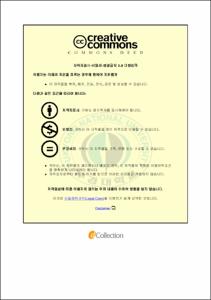수산물 관여수준에 따른 상황요인 연구
- Alternative Title
- A Study on the Situation Factor related to the Level of Consumer Involvement of Seafood
- Abstract
- 소비자들의 욕구가 점차 다양해지고 세분화되면서 먹을거리에서도 감성적, 상징적 가치를 중요시하고 보다 새로운 경험을 하고자 하는 경향이 확산되고 있다. 이에 따라 각 분야에서는 생산 중심적인 판매를 하기보다는 점차 달라지는 소비자들의 욕구의 변화에 관심을 갖고 이를 충족시키기 위하여 다양한 마케팅 전략을 지속적으로 실시하고 있다.
이 같은 환경변화에 적절한 대응을 위해서 수산물의 소비촉진 및 확대를 위한 소비자 행동에 기초한 연구는 반드시 고려되어야 할 부분이지만 지금까지 수산물에 대한 소비자 행동에 관한 연구는 미약한 실정이다.
따라서 본 연구에서는 수산물을 구매하는 소비자 행동을 파악하기 위해 먼저, 마케팅 및 소비자 행동 분야에서 제품과 관련된 태도와 행동을 결정짓는다는 점에서 주요한 설명 변수로 사용되는 관여의 개념을 도입하여 수산물에 대하여 소비자들은 어떠한 측면들로서 연계되어 있는지 살펴보고자하였다. 또한 소비자들이 제품을 구매하고 소비하는데 영향을 미치는 상황을 통하여 수산물에 있어서의 상황 요인은 어떻게 형성되는지 알아보고 수산물 관여수준에 따라 집단을 분류하여 소비 및 구매하는 상황에서 어떠한 차이를 나타내는지 연구하였다.
그 결과, 수산물의 관여 차원은 선호 및 관심뿐만 아니라 지식, 위험지각, 효익의 다차원으로 구성되어있는 것을 확인하였으며 수산물 상황 요인은 크게 구매상황, 소비상황, 커뮤니케이션 상황으로 구분되었고, 구매상황의 요인으로는 점포 요인, 소비상황은 건강요인과 요리동기요인, 커뮤니케이션 상황은 정보 요인으로 나타났다.
수산물의 관여수준에 따른 관여차원의 차이가 있는지 알아본 결과, 고관여 집단에서는 선호 및 관심, 위험지각, 효익의 차원이, 저관여 집단에서는 선호 및 관심, 지식, 효익의 차원으로 구분되어 나타나 관여수준에 따라 수산물에 대한 관여 차원이 다르게 형성됨을 알 수 있었다. 또한 관여 수준별 상황의 요인 분석 결과, 고관여 집단에서는 구매상황, 소비상황, 커뮤니케이션 상황이 모두 나타났으며 저관여 집단에서는 구매상황과 커뮤니케이션 상황만이 요인으로 나타났다.
관여수준에 따라 상황요인이 미치는 영향을 알아보기 위하여 분석한 결과, 고관여 집단에서는 구매상황의 점포요인만이, 저관여 집단에서 는 커뮤니케이션 상황의 정보요인만이 영향을 미치는 것으로 나타났다.
본 연구는, 수산물 소비 및 구매행동에 대한 기존의 연구들이 사용하였던 소득, 가격, 연령 등의 표면적인 측면에서가 아닌 소비자들의 내면적인 입장에서 행동을 파악할 수 있는 변수로서 관여도의 개념을 도입하여 그 수준에 따라 소비자의 특성을 알아보고 또한 상황요인과의 관계를 규명하였다는 점에서 그 의의를 둘 수 있다.
As consumer’s demand has been diversified and segmented, there are more people who have tendencies to get new experiences and put more importance on emotional and symbolic value of food. For this reason, each seller continuously develop and expand marketing strategies to comply with consumer’s demand which gradually in changing and to satisfy the consumer.
To deal with such market changing condition, a study on consumer behavior to the seafood consumption is necessary to promote and increase seafood consumption. However, this kind of study is still need to be more developed in advance.
Therefore, this study, first, it is trying to examine what factors introduced the concept of involvement are related to the consumers, and this is for understanding seafood-consumers behavior.
The concept of involvement is considered as an important variable that is able to explain and conclude the consumer's behavior and attitude toward seafood products in the marketing fields.
Secondly, this study, examined how the situation of seafood sectors influences consumer's behavior on purchasing and consuming products, and classified what the differences in purchasing or consumption situation among groups classified according to the level of seafood involvement.
The result showed that seafood involvement is created by not only interests and preferences, but also knowledge, perceived risk and multidimensional profits.
The seafood involvement is divided into purchasing situation, consuming situation and communication situation: purchasing situation includes store sector, while consuming situation includes health sector and cooking-motive sector and communication situation includes information sector.
Results of examining whether there are differences in the involvement explains that the involvement is different according to the level and it is divided into 2 groups. The first groups is the high-involvement group that considers preferences, interests and perceived risk, and the other group is the low-involvement group that considers preferences, interests, knowledge and profits.
The result on examining whether situation sectors have influences on the involvement shows that high-involvement group is only affected by store section in purchasing situation and low-involvement group is only affected by information sector in communication situation.
In conclusion, this study has significant meaning since the variable used is a concept of involvement which make it possible to understand the consumer's behavior by their internal factors. It is unlike many previous studies about seafood consumption and purchasing behavior that much considers the external factors such as income, price or age.
- Issued Date
- 2009
- Awarded Date
- 2009. 8
- Type
- Dissertation
- Publisher
- 부경대학교 대학원
- Alternative Author(s)
- Kim, Min Ji
- Affiliation
- 부경대학교 대학원
- Department
- 대학원 해양산업경영학과
- Advisor
- 장영수
- Table Of Contents
- Ⅰ. 서론 = 1
1. 연구의 배경 및 목적 = 1
2. 연구 범위 및 방법 = 3
Ⅱ. 이론적 배경 및 선행연구 = 4
1. 관여도에 대한 고찰 = 4
가. 관여도의 개념 = 4
나. 관여도의 분류 = 6
다. 관여도의 측정 = 7
2. 상황에 대한 고찰 = 9
가. 상황의 개념 = 9
나. 상황의 분류 = 10
3. 선행연구 = 13
Ⅲ. 연구 설계 = 15
1. 연구문제 = 15
2. 연구 변수 = 16
3. 조사 방법 = 18
가. 표본의 추출 = 18
나. 설문지의 구성 = 18
다. 통계처리 방법 = 19
Ⅳ. 실증분석 = 20
1. 표본의 일반적 특성 = 20
2. 관여도 및 상황의 요인분석 = 22
가. 관여도 = 22
나. 상황 = 25
3. 연구가설 검증 = 31
가. 수산물 관여도 차원과 상황요인의 차이 = 31
나. 수산물 관여 수준에 따른 상황요인 = 38
Ⅴ. 결론 및 시사점 = 42
참고문헌 = 45
【부록】 수산물 구매행동에 관한 설문지 = 48
- Degree
- Master
- Files in This Item:
-
-
Download
 수산물 관여수준에 따른 상황요인 연구.pdf
기타 데이터 / 690.96 kB / Adobe PDF
수산물 관여수준에 따른 상황요인 연구.pdf
기타 데이터 / 690.96 kB / Adobe PDF
-
Items in Repository are protected by copyright, with all rights reserved, unless otherwise indicated.